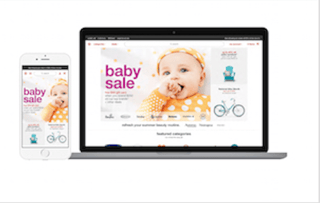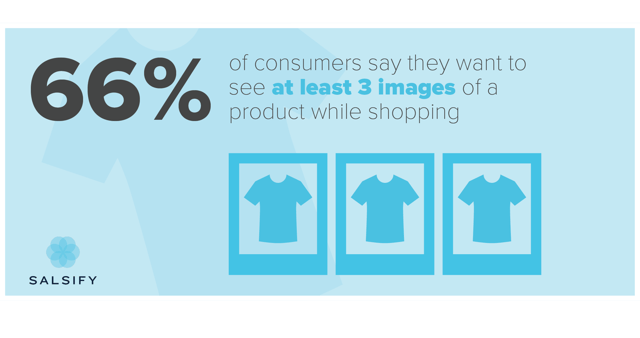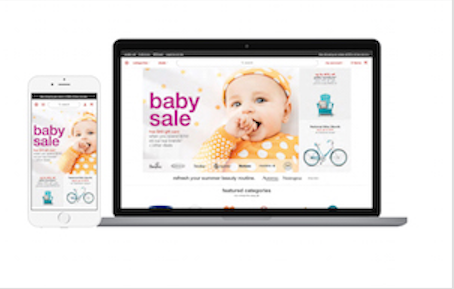 Target recently issued a June 30th deadline for its vendors to supply product images - with specific specifications to it’s FTP system. “Images past this date are considered late and may result in a delayed launch date on Target.com,” warned the retailer in its email to brands.
Target recently issued a June 30th deadline for its vendors to supply product images - with specific specifications to it’s FTP system. “Images past this date are considered late and may result in a delayed launch date on Target.com,” warned the retailer in its email to brands.
A delayed launch on the site could stall your sales or negatively impact product page traffic. If you received notice of this “August Revision” or think you might be affected it’s important to react quickly and do what you can to ensure your products make it to the retailer’s updated site.
What Target is asking for?
Follow up with your contacts at Target with any specific questions about your products - but here is what we’ve learned about the image specifications from an email from our customers:
A minimum of one product image per TCIN must be submitted through Accellion and stored in your brand’s folder by June 30, 2016 to avoid penalty.
The Image Specifications are:
- The minimum pixels is 1300 (square, or on one side), which is required for zoom capabilities. This is the preferred size. The maximum is 3000 pixels
- Accepted file formats: .TIF, .PNG, .JPG, .BMP, .PSD, 8bit, saved with LZW Compression
- Color Space: RGB (Adobe RGB (1998) preferred)
- Images must be labeled with the Target.com Item Number (TCIN) provided by the Target IDS. Primary images should be submitted with just the TCIN number (Ex: 1234567) and secondary images should have 01, 02 and so on in the order they should appear on site (Ex: 1234567_01, 1234567_02)
How can you get ready?
Depending on how many TCINs you have with Target, and where and how your images are currently stored - meeting this deadline could be an incredible challenge. Here’s our advice for preparing for this change:
- Know the scope. Prioritize your efforts by understanding the biggest revenue drivers from Target.com. Understand how much of your product inventory is affected by the change and identify what needs to be done for each group.
- Identify data gatekeepers. Who in your organization owns what data? Are there brand managers, graphic designs, compliance officers, or partner agencies that can help you locate existing images or commission new ones and ensure you are
- Lay a foundation for future requests. You need to have a product content management strategy beyond this hurdle. if you hope to create more visibility and transparency throughout the go-to-market timeline. Create a process, identify the people and put the right technology in place to control your brand images.
Salsify Customers: We’re here to help!
Within Salsify, you can identify the products in your list that may still need images. In addition, you can transform existing image size and rename images in order to meet Target’s new requirements. Please contact your Customer Champion with any specific questions along the way. We will continue to work with customers on their individual success in navigating this and other retailer requests.
Why is Target asking for this information?
We can only take our best guess. But here at Salsify, it’s no secret that using images as part of your product content information makes a huge difference when getting customers to select and purchase your product.

In fact, according to our recent research report, Cracking the Consumer Code: Product Content Drives Conversion, 66% of consumers want to see at least three images when shopping for a product to buy. More importantly, and perhaps why Target is turning to brands for content, is our research found that 75% of consumers said they prefer product images against a plain background or in use, rather than photos from customers who have bought the product. Brands should prioritize providing imagery that clearly shows the consumer what they are getting over leaving any of your retailers to source user-generated images.
For more information about what product content is going to have an impact on your sales, download the full research study, Cracking the Consumer Code: Product Content Drives Conversion.
Written by: Erin Paugh
Recent Posts
Bridge the Product Information Gap: How a Digital Catalog Ensures Every Stakeholder Is on the Same Page
AI in Product Information Management (PIM): Cut Through the Hype To Find Real Revenue Impact
Beyond Amazon: Multichannel Sales Strategies for Prime Day Alternative Sales
Subscribe to the Below the Fold Newsletter
Standing out on the digital shelf starts with access to the latest industry content. Subscribe to Below the Fold, our monthly content newsletter, and join other commerce leaders.


.svg)